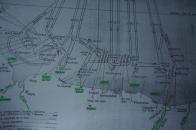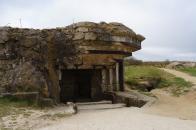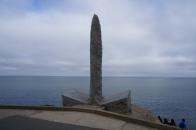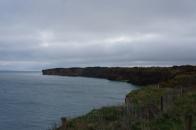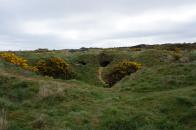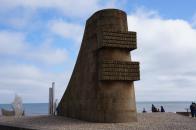Profile
Blog
Photos
Videos
Wake up call at 5.30am. We were picked up at 6.30am by Danielle our tour guide and travelled in a small van with 6 Americans and followed the coast road to Sword, Juno, Gold, Omaha and Utah beaches. One of our fellow passengers had small american flags that she handed out to everyone to place on the graves at the American Cemetary at Omaha. It was really a moving experience. We placed them on the Rooselvelt brothers graves located on Row D14 Quentin died 1918 and Theodore died in 1944. The crosses were made of marble and all faced west toward the homeland, America. Theodores name was in gold and he also had the Medal of Honour inscribed on his cross.
The Normandy Landings began on the 6th June 1944, when 130,000 troops set off from the south coast of England. Operation Overlord had begun.
First an air-based landing took place very early in the morning, with both British and American troops being parachuted in to occupied France, followed by a sea-based invasion at 6.30 in the morning. In just that one day 130,000 troops were landed on the Normandy coast at Sword, Juno, Gold, Omaha and Utah beaches.
Despite a great deal of lives lost (50,000 in Calvados alone), these battles represented the turning point of the Second World War in western Europe.
As we walked along the beaches and through the cemeteries, the sense of history and importance of the places is inexcapable. It is an extremely moving event to walk on the Normandy Landings beaches, and also to visit the cemetries containing thousands of graves in well tended lines, and to reflect on what the world might be like today without the bravery and victory of those landings.
West of Omaha Beach we visited Pointe de Hoc and saw the cliffs that the US troops needed to climb as part of the landings in the face of strong defence from the Germans - the various bunkers and craters left by the bombs remind us how severe the battle was at this point.
Just off Gold Beach at Arromanches you can see the remains of the floating harbour (the Mulberry Harbour) built hurriedly by the allies and used during the landings.
The War Cemeteries were a reminder of the large numbers that died during the invasions especially the American War cemetery at Colleville-sur-Mer overlooking Omaha Beach
Behind the beaches you can see the remains of bunkers used by the Germans to defend the territory, and even some barbed wire fence sections have been left intact.
Our lunch stop was in a little farm house, well thats what Danielle told us. We ended up in the middle of nowhere in the most delightful old farm. It was huge, the hospitality was fantastic and the food was amazing - Ferme de la Ranconniere. Next stop was Ryes War Cemetary - an Australian Pilot was buried here and we stopped to pay our respects. On our way home Danielle explained the road rules of the Arc de Triomphe. The person entering the Arc has right of way, there are no lanes, she said just close your eyes, floor it and dont show the whites of your eyes. If you have an accident here the police do not want to know about it, it is 50/50. We arrived back at our hotel around 8pm exhausted but humbled by our experience.
- comments





